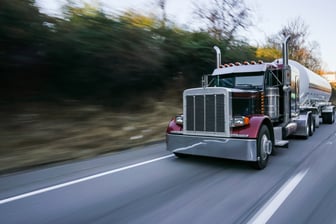Rebuilding Challenges: Heavy Duty ZF Gears
 Having a base of knowledge in your rebuilding specialty is crucial for any rebuilder worth his or her salt. However, the specifics of particular brands and parts can throw your normal routine for a loop. One such example of a part with unique challenges in the heavy duty steering arena is ZF gears. What you might not know is that there are some specific reasons why disassembling and rebuilding a ZF gear presents so much difficulty. Today, we'll be discussing the common pitfalls in a ZF gear rebuild as well as some tips to help you overcome them.
Having a base of knowledge in your rebuilding specialty is crucial for any rebuilder worth his or her salt. However, the specifics of particular brands and parts can throw your normal routine for a loop. One such example of a part with unique challenges in the heavy duty steering arena is ZF gears. What you might not know is that there are some specific reasons why disassembling and rebuilding a ZF gear presents so much difficulty. Today, we'll be discussing the common pitfalls in a ZF gear rebuild as well as some tips to help you overcome them.
What Sets ZF Gears Apart
ZF parts present their own rebuilding challenges because of their unique main housing construction. With many normal steering gears, you know what to expect: a sector shaft is installed into a caged roller bearing and the end play is adjusted laterally using an adjustment screw. The screw is what moves the sector shaft teeth in and out in relationship to the piston teeth.
With ZF gears, it's an entirely different setup that might stump even an experienced rebuilder. ZF gears use loose rollers in the sector shaft carrier, as opposed to the traditional caged design. A small plastic retainer goes in between two of the rollers and applies pressure to hold them into place. Additionally, the lash is set differently because the sector shaft carriers are offset. The carriers are rotated in the housing to move the sector teeth up or down to increase or decrease the amount of interference with the piston teeth.
Common ZF Rebuilding Challenges and Tech Tips

The main challenge facing you in a heavy duty ZF steering gear rebuild is the disassembly. Especially if you're not familiar with the original assembly of the parts, the disassembling process can be intimidating in general. Specifically, removing the sector carriers can be a challenge when there are two sets of sector teeth to deal with. However, in order to overcome this challenge, our best tip is to use a good 3 jaw gear puller to remove the sector carriers. Some rebuilders recommend narrowing the teeth of the puller in order to slip them under the lip of the carrier.
Another challenge is making equal adjustments to both sector shaft carriers, since there are two to deal with. When adjusting the sector shaft, many rebuilders also prefer to make their own special tool in order to adjust both carriers at once.
Finally, when installing any seals over a shaft with splines, it's important to take care of the seals in order to prevent and potential tears to the sealing lip that could lead to leak paths. ZF steering gears are certainly susceptible to this mistake. In order to protect your seals, rebuilders can either tape off the splines of the shaft or use a piece of Mylar dipped in oil to protect the seal while installing.
Use Care When Rebuilding ZF Gears
While heavy duty ZF gears are special in a variety of ways—and present unique challenges all their own—the reason for using care when rebuilding them is the same as any other rebuild job. Missteps can equal an eventual failure of the system, which is not only costly, but also inconvenient and unsafe for drivers. Leaks and damage to the actual gear body can cause additional issues and/or make the gear irreparable in the future, so it's important to avoid mistakes. If ZF gears give you rebuilding trouble, the first step to overcoming your issues is to understand what makes them different. Then, armed with both the right rebuild parts and the necessary knowledge, you can provide rebuilds with consistently quality and confidence.


